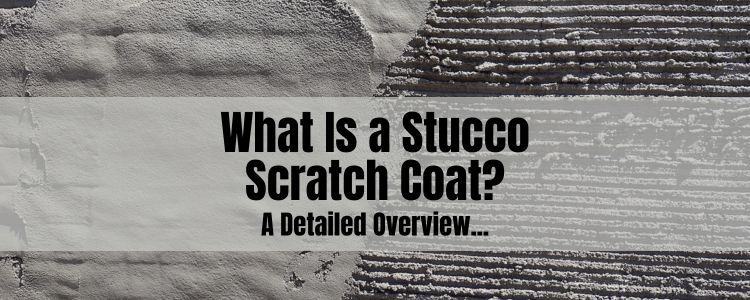
The stucco scratch coat comes up a lot when people start researching stucco and it is just a single coat that is part of the three coat stucco process, but there is more to it than just being a simple base coat.
What Is A Stucco Scratch Coat?
A stucco scratch coat is the second process in the three coat stucco system, where a base coat material (cement, lime, sand and water) is applied to the wall and then scratched with horizontal lines to aid in the adhesion of the next coat. The scratch coat is really the "foundation" coat for the three coat stucco system.
The Raw Materials Used To Make It...
Ingredients: The scratch coat is usually a cement based material that is made up of cement, sand, lime and water, similar to concrete, just without gravel. It is designed this way because when it dries, it becomes hard and strong, two ingredients that a good base coat should have.
Consistency: When it is mixed up properly, it will have a body to it and be similar in consistency to mayonnaise or whipped cream, just not quite as fluffy and a lot heavier.
What's The Purpose of the Scratch Coat?
The sole purpose of the scratch coat is to provide an initial base or foundation for all the other coats that will be applied on top of it (in a 3 coat stucco system) and to partially fill some of the needed depth that the stucco needs to be, when all coats are applied.

The Initial Base For Other Coats: The scratch coat is the first base coat that is installed directly over the lath (paper and wire that goes on first). When you spread the scratch coat material onto a wall, it will grab onto the wire and smash around it and will stay in place, if the proper consistency is used.
This is how we can get the scratch coat to anchor to the wall, by embedding it into the wire, which is stapled to the studs of the wall, creating a solid base for other coats.
As A Filler: I also mentioned how the scratch coat acts as a filler coat for the overall depth of the three coat stucco system, which is usually 7/8" thick. The scratch coat is approximately half of that depth, which is 7/16" but can range in thickness from 3/8" - 1/2".
This is essential since most stucco base coats can only be applied at a maximum depth of around 1/2" without issues like cracking or sagging coming into play.
When Is It Used?
The scratch coat is only used in the three coat stucco system, in regard to all stucco systems. It can also be used when installing some type of veneer stone or faux stone to a wall. It will provide a suitable base for the stone that can then be attached to.
Application of the Scratch Coat
I am going to touch on applying the scratch coat and talk about some of the important specifics on why it is applied that way.
The Importance of the Lath:
Before the scratch coat can be applied, the lath needs to be installed so we know that the scratch coat has something solid to bond to and so no water is able to enter through the walls.
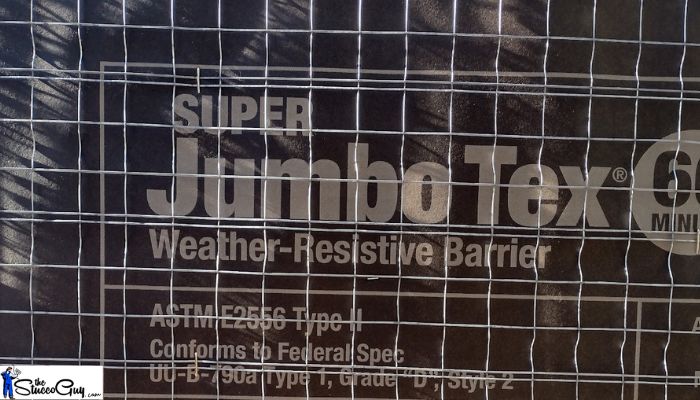
The lath does these two things, it provides a water-resistant barrier, via the asphalt infused paper that is applied first and provides a base that the scratch coat will adhere to (the wire).
Applying the Scratch Coat To A Wall:
Once the scratch coat material is all mixed up, it can be applied to a wall in two different ways: by hand or by a pump.
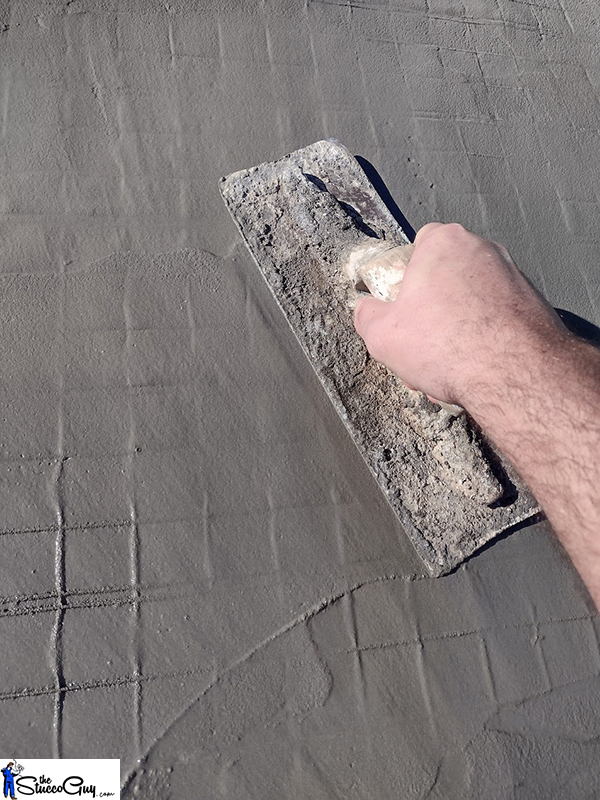
Applying by Hand: The hand applied method is used most of the time and is done so by using a hock and trowel or using a larger tool like a "boogie board". The material is loaded up onto your hock or board and is then applied to the wall using pressure, which smashes it into the wall and it clings to the wire.
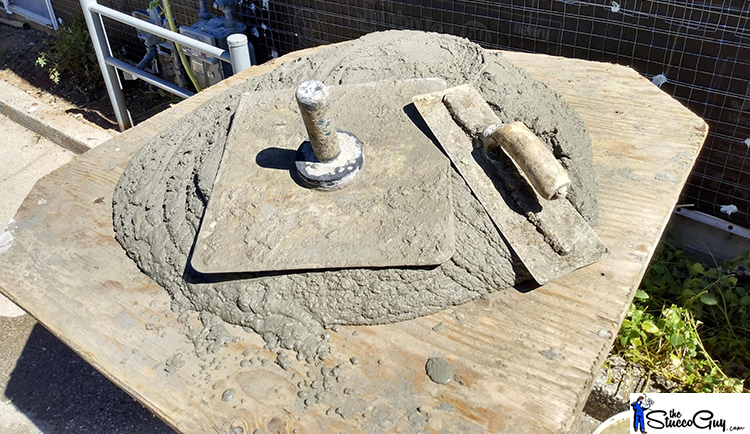
After a good amount of material is applied to the wall, it is then "scratched" in a horizontal direction, to make a rough grooved profile that will allow the next coat to stick to it, when it is cured.
Applied By Pump: Another option that is used by larger companies would be to use a pump and spray the base coat material onto the wall. The material is then worked by several people using trowels to get the material more evenly spread out to a more uniform depth. The scratcher toll is then used to make those horizontal scratch lines.
Creating the "Scratch" Texture
The scratched texture is an important part of the process and is why the next coat is able to stick to it. The profile of the horizontal lines make a lot of tiny ledges that the next base coat's material can hang on to.
If these lines were applied vertically to large portions of the wall, we would not get as good of a ledge, which could result in the material sliding down the wall in a large "avalanche" type of situation.
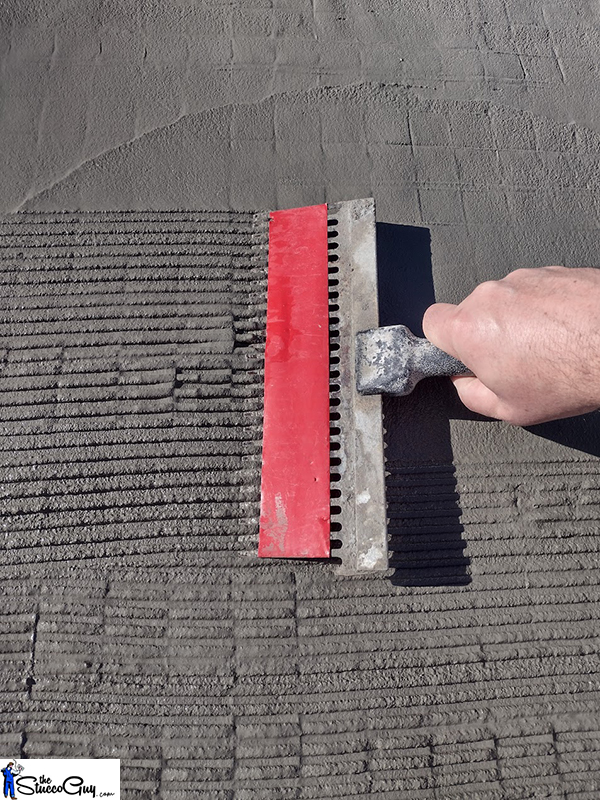
Scratch Coat Drying and Curing...
Another (often overlooked) part of the scratch coat process includes drying time, also referred to as cure time.
What is Cure Time: Cure time is basically referring to the amount of time the material needs to dry out and become hard before the next coat is applied over it. If the material is too soft, it will not provide enough support to the next layer and could fall off the wall or create air pockets, resulting in weak areas of the wall, among other problems.
The Importance of a Slow Cure: The importance of how fast or slow the scratch coat dries out or cures, is also another important factor you need to take into account. The slower the drying process, the better.
To make things simple, the slower the scratch coat dries, the harder and stronger it will be. If it dries out too fast, it will be more brittle and weaker. You can control the process by misting a curing wall with water periodically, especially if the temperatures outside are above 75 degrees (F).
Scratch Coat Cure Time: The recommended cure time for a stucco scratch coat is 48 hours or two days, which will allow the material adequate time to harden and provide enough support for the next layer.

